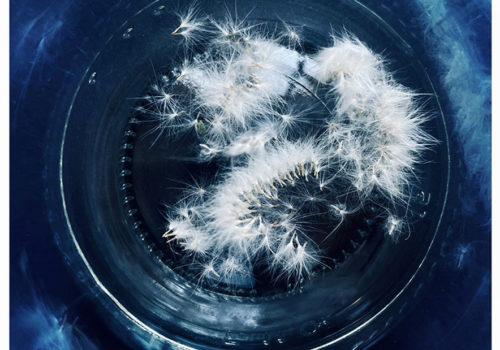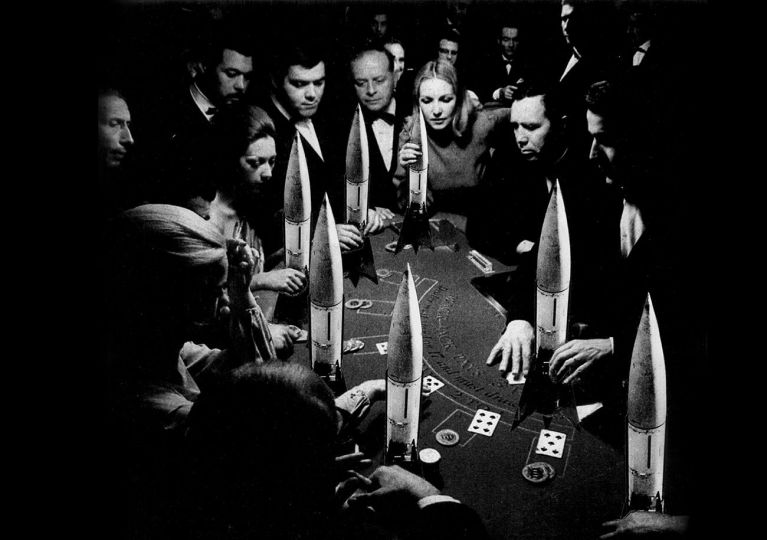Galerie Michael Lonsdale presents Nathalie Perakis-Valat‘s exhibition entitled Rêveries Bocaliques. Jean Loh writes this text.
The Flowers of Zen (An essay on Nathalie Perakis’ photography of flowers)
This title is inspired by Baudelaire’s Les Fleurs du Mal. Here are the first lines of the poem “The perfume flask”:
There are strong perfumes for which all matter
Is porous. One would say they go through glass.
On opening a coffer that has come from the East,
Whose creaking lock resists and grates,
Or in a deserted house, some cabinet
Full of the Past’s acrid odor, dusty and black,
Sometimes one finds an antique phial which remembers,
Whence gushes forth a living soul returned to life.
(April 20, 1857)
There are two things that are striking at first glance in Les Fleurs de Nathalie, firstly they are reversed visions of the world, they seem to invite us to look at the underside of flowers, and unlike when we used to look at flowers from above, with condescension. If we look at them from below, there is a sort of elevation, as if they were sacred flowers. Secondly, they are not singular flowers, per se, they are flowers because there is the presence of the vase, the flowers then turn into “relics”. The vase acts like an incense burner, from there can rise these “strong fragrances” as quoted from Baudelaire, the living soul that springs from it is simply the fragrance of the flowers.
And when there is a vase, there can be a bottle, a jar, a pot and all these recipients that carry water to keep the flowers ephemeral life. The pot only exists because it is used to hold the flowers. And when there is a glass “flask”, there is porosity, transparency, emptiness, that means vacuity. Nathalie’s jars serve as punctum in the photography of flowers, their function is to draw a circle around the flowers, in the center of the flowers, at the base of the flowers, they are used to frame the flowers, to magnify them, they literally transcend the flowers. Nathalie’s flowers in turn penetrate the glass, look through the jar, pierce through and transcend the jar. The flowers eventually look at us when we look at them, in the manner of a camera lenses sort of Redon’s eye. As much as the Redon’s eye can be wide open or wide shut, these potted flowers can be alive or dead. Didn’t Robert Mapplethorpe’s aesthetically perfect photographs of flowers show them fading and dying? If the master of erotic photography Nobuyoshi Araki in his contemporary creations called his series of erotic flowers “Vaginal Flowers» and went as far as to “ejaculate” paint on his enlarged prints, he was only continuing the path traced by the work of the great kamikaze writer Yukio Mishima who, in collaboration with the brilliant photographer Eikoh Hosoe, created this masterpiece “Barakei, Ordeal by Roses” in 1962-64. Mishima who pursued Beauty till death – his own death by sepuku. These references help to understand the scope of Nathalie’s apparently “pretty and nice” photographs (beware: there are thistles amongst them !)
To stay within the Japanese culture of Eros and Thanatos, Nathalie’s floral arrangements are like elaborate Ikebana that say only one thing:
“At dawn I was born
Baptized with the dew
I blossomed
Happy and in love
The sun shined through
And by night time I was old…
That’s what my friend the rose
Said only yesterday…”
(Françoise Hardy Mon Amie La Rose 1965)
It is at the same time an exercise in “still life”, in the traditional classification of photography categories. In French “Nature Morte”, dead nature the English call “still life”, frozen life, immobile life, muted life. This goes back early on to the invention of photography in the years 1906-1908, when Baron Adolphe de Meyer who was the first to photograph flowers in a pot, in a bowl, in a crystal vase, and in a terracotta jar. Here, Nathalie is also associating flowers with the vase, but what distinguishes this work from other forms of Still Life is the transparency of this vase which magnifies the flowers in a circle tracing the contour of the pot, here we are encountering the iconic circle of Zen masters! Zazen practitioners often train day after day to trace, in a swift move, using a brush dipped in thick Chinese ink, a circle that would inform us about the impermanence of things, the Yin and the Yang of Taiji the seasons of life…
At the same time, this circle represents a self-portrait, it is one’s state of mind at that moment. Sometimes the vase or the bottle has a square shape, then we find ourselves with a Mandala, the magic circle so dear to Carl G. Jung who had got into the habit of drawing his daily mandala to self-analyze. Nathalie’s mandalas have the flowers as their core that sometimes take the form of kaleidoscopes that would light up in coruscating bursts!
In this way, each Ikebana of Nathalie is composed of a “pot” (circle, vacuity) and “flowers” (life, phenomenon) represents the foundation of Zen, “emptiness is form, form is emptiness”. A Sannyasin monk named Bodhidharma in the year 572 left India for China and arrived in a cave near the Shaolin Temple, he sat down in meditation for as long as nine years (!). When he came out, the Monks of the Temple asked him what meditation was, his answer, “Dhyana”, was translated phonetically into CHAN in Chinese, and with some “lost in translation” Chan crossed the sea and arrived in Japan as ZEN.
Fundamentally, we find everything in Nathalie’s flowers, they are the Flowers of Zen. They invite us to a visual meditation, on the composition of forms and colors, on the meaning of lines and curves, on the meaning of full and empty, of presence and absence, on the why of the jars and the why of flowers, the meaning of the vegetal and the mineral, on the attraction of Eros and Thanatos, on being and nothingness, on To Be or Not To Be.
Jean Loh
Nathalie Perakis-Valat : Rêveries Bocaliques
22 May – 1 June, 2024
Galerie Michael Lonsdale
30 rue de Bourgogne
75007 Paris
https://galerie.michael-lonsdale.fr/
















